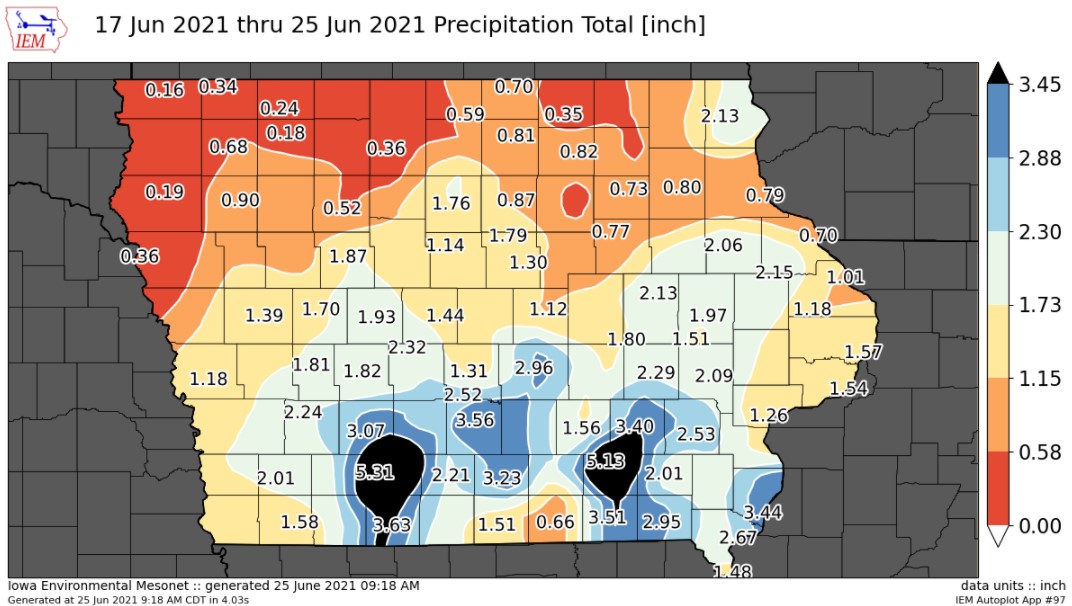June 25th, 2021
posted
by Andrew Blomme on 6/24/2021
in
Weekly Newsletter

June 25th, 2021
Weekly Weather Update
The biggest story of the past week has been the rainfall. The map below shows rainfall totals for the state since last Thursday night.

Our area received between an 1.75" and 2.25" of rain over the last 8 days. Along with the rain came some welcome humidity. Over the past 10-18 days the crop had been burning through water because of high temperatures and low humidity. This past week, with more normal temperatures and higher humidity, the transpiration rates of the crop slowed down. At this stage, a corn plant is using about 0.2" of water a day. With rainfall totally around 2" we gained about 10 days of worth of water with this recent rainfall. The growing season is going to be longer than 10 days so don't stop your rain dances quite yet.
Corn Rootworm Emergence
Corn rootworm is consistently one of the most damaging pests we deal with in corn. Corn rootworm beetles lay eggs in the fall that overwinter and hatch the next growing season. Iowa State predicted that the eggs laid last year would start hatching last week. As a result, now is the optimal time to scout for this pest. Pictured below are rootworm larva that were found on Wednesday.

Corn rootworm is most damaging when it is in its larval stage. Root damage can reduce yield and make a plant more prone to lodging. Larva are just starting to emerge so all the damage I have seen is very minimal. Peak feeding is still ahead of us and we will continue to monitor this pest. You can read more about corn rootworm monitoring and damage at the following link: Iowa State Extension-Corn Rootworm Egg Hatch.
Soybean Reproduction
With the summer solstice behind us, soybean fields are beginning to flower. Pictured below is a soybean plant with two flowers at one of it's nodes.

"Beginning Flower" is the first of eight soybean reproductive stages. Every node of a soybean plant is capable of producing multiple flowers. In the picture above, there are two flowers at the same node but we can expect there to be nodes that will have 6-7 flowers on them. A soybean plant produces a large number of flowers, but up to 75% of those flowers get aborted. The amount of stress a soybean plant experiences helps determine this exact percentage. For example, a soybean plant that is healthy and has adequate water and nutrients is more likely to convert a higher number of flowers to pods compared to a plant that is experiencing a lot of stress. This is one of the reasons that fungicide applications are recommended during R2 or "Full Flower."
You can read more about soybean growth stages at the following link: Iowa State Extension-Soybean Growth Stages.
Looking Ahead
There are several things to be on the look out for over the next 7 days. With thunderstorm chances over the next 48 hours and later in the week our outlook on precipitation looks promising. Corn and soybean development are going to progress rapidly over the next week. Corn is only 2-3 weeks away from tasseling. As a result, the tassel and ear shoot of a corn plant are starting to grow and prepare for pollination. Next week's newsletter will talk about these topics and other observations from the field.